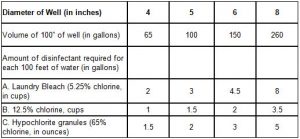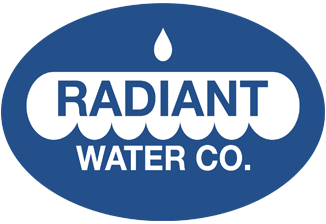WELL SYSTEM TIPS
Pressure Tank
You should verify the pressure in your tank at least annually. If you hear the pressure switch clicking every few seconds, the tank may be waterlogged or out of air. Follow the manufacturer’s instructions on correctly setting the pressure or call 918-834-1515 for more help.
Pressure Switch
Your switch should be inspected for proper operating range (typically 30-50) also check the points for pitting and corrosion. The pressure can be raised by turning the adjusting nut, but if the points are worn the switch must be replaced.
Control Box and Wiring
You should periodically check your controls. Verify all wiring is properly supported and correctly connected to control box and pressure switch. If your pump doesn’t start and you have proper voltage at your switch, check your control box. Radiant can troubleshoot and diagnose any pump control box. We stock relays, capacitors, and boxes.
Well Disinfection
Shock Procedure for disinfecting drilled wells at 100 mg/L +

1 cup = 8 oz (2 cups = 1 pt, 4 cups = 1 qt, 16 cups = 1 gallon)
1 oz = 1 heaping tablespoon (16 oz – 1 lb)
Double above values to obtain solution strength ~ 200 mg/L
Divide above values in half to obtain solution strength = 50 mg/L
WELL DISINFECTION:
Use enough chlorine for a 200 mg/L (PPM) solution. Pour chlorine into well then begin recirculation into well with water hose. Mix chlorine completely (about 5 minutes) to prevent damage to drop pipe and wire. After mixing is complete, open each cold faucet in house until a strong chlorine odor is present, then close faucet. When all faucets have a chlorine odor, let solution stay in lines overnight or at least eight hours. See paragraph below.
WATER HEATER DISINFECTION:
Shut off gas or electric to water heater. Shut off water supply to water heater. Open hot faucet to relieve pressure then connect hose to tank drain and completely drain tank. Turn on supply then flush tank until clear at hose end. (About 5-8 gallons must be used.) Close supply to tank. Cold flex line must be disconnected. Pour in 1 cup chlorine per 5 gallons of tank capacity. Reconnect cold line, then slowly refill tank as hot faucets are slightly open to release air. When all air is released and tank is full, check for chlorine odor at all hot faucets, then let solution stay in tank and lines overnight or at least eight hours. Turn on gas or electric to water heater.
After at least eight hours, open faucets and let water run until no chlorine odor is present. After one day of use, another sample can be taken for bacteria testing.
Disinfection may need to be done periodically.
